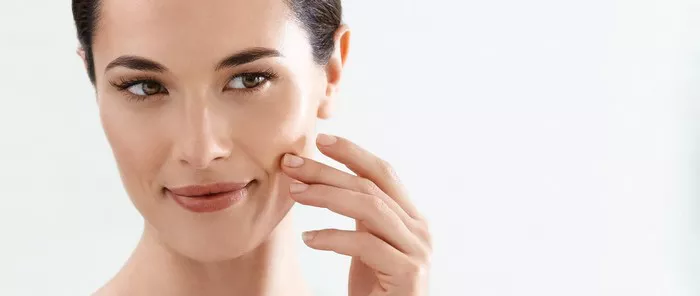Wrinkles are a natural part of the aging process and can appear on various parts of the body, including the face, neck, hands, and arms. While wrinkles are often associated with older individuals, the age at which they first appear can vary significantly from person to person. In this article, we will explore the factors that contribute to the development of wrinkles and discuss strategies for preventing and reducing their appearance.
Understanding Wrinkles
Wrinkles are creases or folds in the skin that occur as a result of the loss of elasticity and collagen fibers in the dermis, the deeper layer of the skin. The primary factors contributing to the formation of wrinkles include:
-
Aging
Aging is the most significant factor in the development of wrinkles. As we age, the production of collagen and elastin, which are responsible for maintaining the skin’s firmness and elasticity, decreases. This leads to a gradual loss of skin elasticity and the formation of wrinkles.
-
Exposure to Sunlight
Prolonged and unprotected exposure to ultraviolet (UV) radiation from the sun is a major contributor to premature skin aging and the development of wrinkles. UV rays can damage collagen fibers and impair the skin’s ability to repair itself, leading to the formation of wrinkles.
-
Smoking
Smoking accelerates the aging process of the skin by constricting blood vessels, reducing blood flow, and depriving the skin of essential nutrients and oxygen. The chemicals present in cigarette smoke also damage collagen and elastin fibers, contributing to the formation of wrinkles.
-
Genetics
Genetic factors play a role in determining the rate at which wrinkles develop. Some individuals may have a genetic predisposition to produce less collagen or have skin that is more susceptible to damage, resulting in earlier onset of wrinkles.
-
Repetitive Facial Expressions
Repeated muscle contractions from facial expressions, such as squinting, frowning, or smiling, can lead to the formation of dynamic wrinkles. These wrinkles typically appear in areas of the face where the underlying muscles are most active, such as the forehead, around the eyes (crow’s feet), and between the eyebrows (frown lines).
When Do Wrinkles Typically Appear?
The age at which wrinkles first appear can vary significantly among individuals. While some people may start noticing fine lines and wrinkles in their 30s or 40s, others may not experience significant wrinkling until their 50s or later. Several factors influence the timing of wrinkle formation:
-
Skin Type
Individuals with fair skin tend to have less melanin, which provides natural protection against UV radiation. As a result, fair-skinned individuals may be more prone to sun damage and the early development of wrinkles compared to those with darker skin tones.
-
Lifestyle and Environmental Factors
Lifestyle choices, such as sun exposure, smoking, and diet, can accelerate the aging process and contribute to the earlier onset of wrinkles. Environmental factors, such as pollution and harsh weather conditions, can also impact the skin’s health and appearance.
-
Genetic Factors
Genetic predispositions, including family history of early wrinkling, skin type, and inherent collagen production, can influence the age at which wrinkles appear.
Prevention and Reduction Strategies
While wrinkles are a natural part of aging, there are several strategies you can implement to help prevent their early onset and reduce their appearance:
-
Protect Your Skin from the Sun
The most effective way to prevent premature wrinkling is to protect your skin from UV radiation. Use broad-spectrum sunscreen with a high SPF, wear protective clothing, and seek shade during peak sun hours.
-
Adopt a Healthy Lifestyle
Avoid smoking, as it accelerates skin aging. Maintain a well-balanced diet rich in antioxidants, vitamins, and minerals, as these nutrients promote healthy skin. Stay hydrated, exercise regularly, and get enough sleep to support overall skin health.
-
Establish a Skincare Routine
Cleanse, moisturize, and protect your skin daily. Use skincare products that contain ingredients like retinoids, vitamin C, hyaluronic acid, and peptides, which can help improve skin texture, boost collagen production, and reduce the appearance of wrinkles.
-
Avoid Repetitive Facial Expressions
Be mindful of facial expressions that involve repetitive muscle movements. Consider practicing relaxation techniques and facial exercises to help reduce muscle tension and promote relaxation.
-
Consider Medical Interventions
In some cases, medical interventions may be desired to address wrinkles. These may include topical treatments, injectables (such as Botox or dermal fillers), chemical peels, microdermabrasion, or laser resurfacing. Consult with a qualified dermatologist or cosmetic surgeon to determine the most suitable options for your needs.
Conclusion
The age at which wrinkles appear varies from person to person and can be influenced by factors such as genetics, lifestyle choices, and environmental exposures. While wrinkles are a natural part of aging, adopting healthy habits, protecting your skin from the sun, and establishing a skincare routine can help delay their onset and reduce their appearance. Remember that prevention is key, and early intervention with medical treatments can provide additional options for addressing wrinkles. Embrace a holistic approach to skincare and embrace the aging process gracefully, knowing that there are various strategies available to help you maintain healthy, vibrant skin for years to come.


